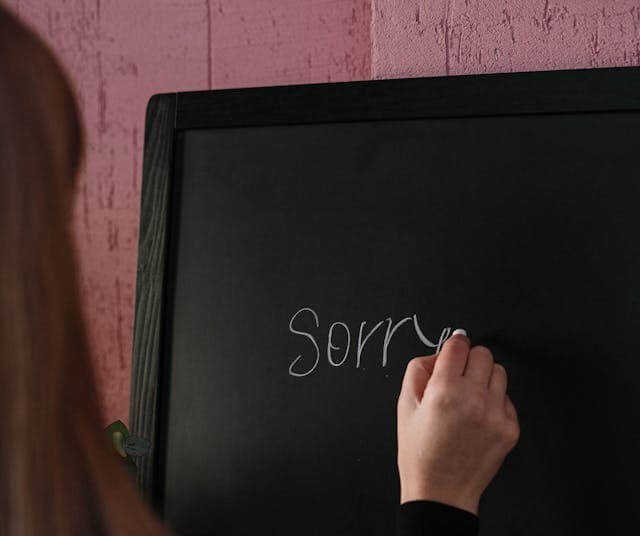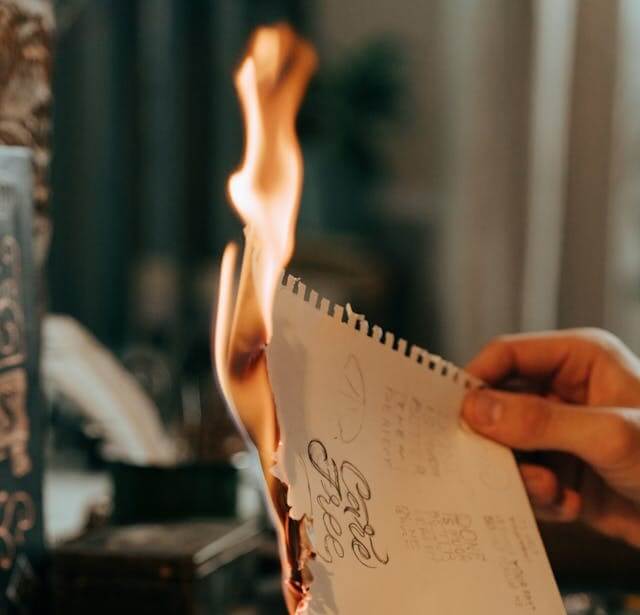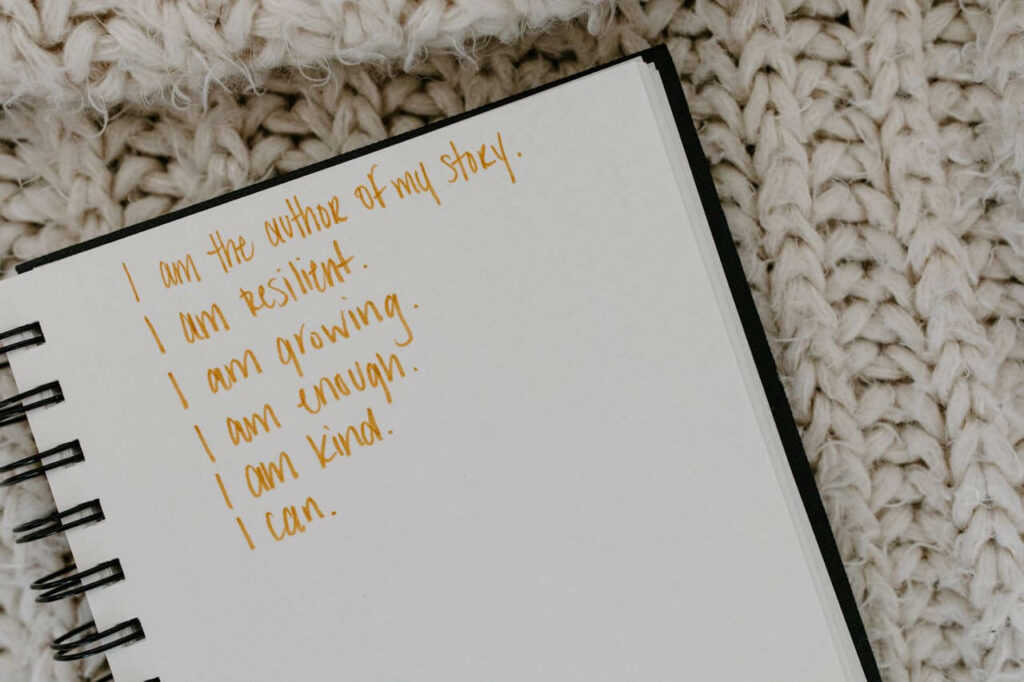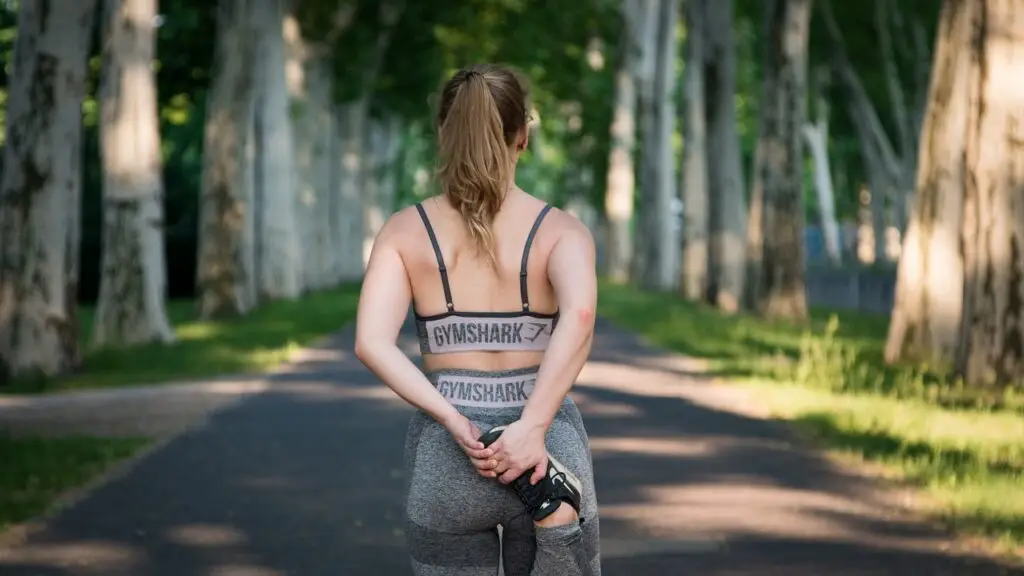Forget the Past: How to Forgive and Move On
This week, we’re stepping into April with a beautiful and brave reminder: you deserve peace, and you deserve freedom. And often, the most powerful way to get there is by doing something hard but life-changing—learning how to forgive and move on. Because no matter how many happiness hacks you try or how many vision boards you make, if you’re still carrying emotional pain from the past, it will always weigh you down.
Over the last few weeks, we’ve been unpacking the most common obstacles to happiness—overthinking, worry, self-criticism—and now we’re focusing on one of the heaviest burdens we can carry: unforgiveness. Holding on to resentment or refusing to forget the past is one of the biggest blocks to joy. And if you’ve been wondering how to be happy, you’ll find that forgiveness is one of the most practical ways to increase happiness—even if it’s also one of the most misunderstood.
This week, we’ll explore how to forgive and move on in a way that feels safe, authentic, and empowering. You’ll learn how to forgive without minimizing your pain, how to practice forgiveness without inviting harm back in, and how to be happy by finally releasing what no longer serves you. Because learning how to forgive isn’t about anyone else—it’s about you. Your healing, your inner peace, and your beautiful, joy-filled life. Let’s begin.

Understanding the Past: A Story We Keep Telling Ourselves
If you’ve been wondering how to forgive and move on, it helps to begin with a simple truth: the past no longer exists. It’s not a place you can return to. It’s a collection of memories—some accurate, some distorted, all viewed through the lens of who we are today.
And yet, we carry the past as if it’s still happening. We relive it, retell it, and replay it in our minds. Sometimes, we let it define us. But if you’re serious about learning how to forgive and embracing practical ways to increase happiness, it starts with understanding that the past has no power—unless we hand it over.
One of my favorite movie quotes comes from The Lion King, and it says everything we need to hear:
“It’s in the past.”
“Yeah, but it still hurts.”
“Oh yes, the past can hurt. But from the way I see it, you can either run from it or learn from it.”
The wisdom in those words is timeless. When we practice forgiveness, we’re not saying the pain didn’t happen. We’re choosing to learn from it, not live in it.
Because the truth is—we don’t always know if something is “bad” or “good.” Life has a way of surprising us.
Lessons from a Taoist Story
There’s a powerful Taoist story that illustrates this perfectly:
This is a Taoist story of an old farmer who had worked his crops for many years. One day his horse ran away. Upon hearing the news, his neighbors came to visit. "Such bad fortune," they said sympathetically. "Maybe," the farmer replied.
The next morning, the horse returned, bringing with it three other wild horses. "Such good fortune," the neighbors exclaimed. "Maybe," replied the old man.
The following day, his son tried to ride one of the untamed horses, was thrown, and broke his leg. The neighbors again came to offer their sympathy on his misfortune: "Such terrible fortune!" "Maybe," answered the farmer.
The day after, military officials came to the village to draft young men into the army. Seeing that the son's leg was broken, they passed him by. The neighbors congratulated the farmer on how well things had turned out. "Such wonderful fortune," they said. "Maybe," the farmer replied.
Moral: We never know what life will bring, so it might be better to stop labeling situations as bad.
You see, we often rush to judge our experiences—but to forget the past isn’t about erasing it or pretending it didn’t happen. It’s about releasing the labels, softening our grip, and letting time offer us a wider view.
When you practice forgiveness, it’s not for the people who hurt you. It’s for you. For your future. For your freedom. It’s one of the most transformative happiness hacks you can apply—and one of the most direct answers to the question of how to be happy.
What happened, happened. But what you do with it now is entirely up to you. Are you ready to rewrite the story?

Regret: The Burden We Choose to Carry
When we talk about how to forgive and move on, we can’t skip the heavy backpack so many of us carry: regret. It often feels like an unavoidable side effect of life, but it doesn’t have to be.
There are two major categories in our past: the memories we’re proud of and the ones we regret. Most people, sadly, give far more energy to the second category. But learning how to forgive ourselves means realizing that regret doesn’t serve us unless we use it to evolve. Regret is not meant to be a lifelong sentence. It’s meant to be a teacher.
Some people even find comfort in their regret. It reinforces an identity of being the victim, of being wronged. But that’s not why you’re here. You’re here to practice forgiveness, find peace, and move forward. You’re here to discover how to be happy, even after everything you’ve been through.
Because the truth is this: the past can be your greatest teacher or the biggest thief of your joy. It can help you connect more deeply with who you are—or it can rob you of the present moment. The key lies in your willingness to shift your focus. If you want to forget the past, you don’t have to erase it—you just have to stop letting it define who you are now.
Regret: Exercise
Here’s a simple but powerful exercise to help reframe regret—one of the most practical ways to increase happiness:
- Name your biggest regret. Write it down clearly and honestly. Then put it aside. Let the paper hold it now—you don’t need to carry it every day. You’ve done your time. You deserve a break from the loop of guilt.
- List three moments you’re proud of—no matter how small. Maybe you showed up when it was hard. Maybe you forgave someone. Maybe you simply kept going when you could have given up. Celebrate those.
- Each week, recall one “failure” that turned into a hidden blessing. Maybe it was quitting a job that drained you. Or leaving a toxic friendship. Or making a mistake that ultimately helped you grow. Rewriting your past is one of the best happiness hacks—because when you shift how you see your story, you shift what it means to be you.
Remember: You are not your wounds. You are the one seeking the healing. And in doing so, you’re already on the path of learning how to forgive, which is, in itself, one of the deepest expressions of freedom and love.

The Truth About Forgiveness
Let’s clear something up right away: learning how to forgive and move on isn’t about pretending the hurt never happened. It’s not about forgetting, excusing, or letting people walk all over you. Forgiveness is not about them. It’s about you.
To practice forgiveness is to reclaim your peace. It’s a powerful decision to forget the past in a healthy way—not by erasing it, but by removing its grip on your present. Forgiveness is the moment you stop paying the emotional price for someone else’s wrongdoing.
Resentment isn’t free. It costs you your clarity, your sleep, your lightness of being. Even when your anger feels justified, holding on only creates tension in your body and blocks your path to peace. And you deserve peace.
As we explore how to forgive, let’s remember: Even when we’re filled with righteous rage, it’s still rage. Even when the other person was wrong, staying trapped in bitterness is like drinking poison and hoping they get sick.
To forgive and move on doesn’t mean putting your heart back on a silver platter and handing it over. It means you stop letting them take up emotional space inside you. You unhook. You breathe again.And you make space for how to be happy in the now.
Here’s the truth: Forgiveness is an act of radical self-love. It takes courage. It takes intention. And no—it’s not always quick. But it’s one of the most practical ways to increase happiness that you’ll ever find. It’s a practice. A commitment to healing. A powerful happiness hack that clears the path ahead.
So, start where you are. Don’t force yourself to feel what you don’t. But open the door just a little. Let forgiveness walk in, not because they deserve it—but because you do.

Why We Must Let Go
Holding a grudge is like carrying around a heavy backpack that only you feel, but never put down. It weighs on your heart, clouds your thoughts, and quietly sabotages your peace. Not being able to forgive keeps you stuck in emotional survival mode, where every reminder of the past reopens an old wound.
Here’s the truth: You can’t learn how to forgive and move on until you understand what unforgiveness is costing you.
Grudges aren’t just mental loops. They cause real harm to your health and happiness. Studies show that chronic resentment is associated with:
- Elevated cortisol (your primary stress hormone)
- Increased blood pressure and tension
- Weakened immune system
- Sleep disruption and fatigue
- Chronic anxiety and emotional dysregulation
In contrast, people who practice forgiveness experience profound benefits—physically, emotionally, and spiritually. Forgiveness has been linked to:
- Lower rates of depression and anxiety
- Improved cardiovascular health
- Stronger, more authentic relationships
- Higher self-esteem and inner peace
- Greater life satisfaction and joy
Learning how to forgive is one of the most overlooked happiness hacks—because it asks you to free yourself from pain, even if the other person never says sorry. It’s not about denying what happened. It’s about choosing not to let the wound define your future.
To forget the past doesn’t mean erasing it. It means transforming it. Turning pain into wisdom. And that’s one of the most practical ways to increase happiness—releasing the past so it no longer controls your present.
When you forgive and move on, you make room for everything you truly want: calm, freedom, and a chance to fully learn how to be happy again.

How to Forgive and Move On: A Step-by-Step Healing Practice
Forgiveness isn’t easy—but it is essential. If you’ve been searching for how to forgive and move on, this is your moment. Let’s not sugarcoat it: forgiveness takes courage, compassion, and often, repeated effort. But it is one of the most practical ways to increase happiness and a proven happiness hack that can change your emotional state, your relationships, and your entire life.
Forgiveness isn’t about excusing harmful behavior or forgetting what happened. It’s about choosing peace over pain. About untangling yourself from the past so you can feel light and free again. This week, we challenge you to practice forgiveness—not for others, but for yourself. Because holding on is heavy. And letting go is how to be happy again.
This Week’s Forgiveness Challenge
Here’s your invitation for this week: start learning how to forgive.
Forgiveness is not a one-time decision—it’s a process. This week, choose one or more tools from the list below and begin your journey. Don’t wait until it feels easy. Start small, start now.
Your challenge:
- Make a list of three people you still feel resentment toward.
- Begin with the smallest hurt—someone who disappointed you but didn’t deeply wound you.
- Pick one tool from the next section and practice forgiveness daily.
- Say this affirmation every day: “I am willing to forgive. I am ready to be healed. I am free.”
Also, make an effort to forgive yourself. Picture yourself as a 3- or 4-year-old child—innocent, pure, and simply a victim of another victim. That child didn’t know better. And neither did you. Send that version of you compassion and understanding. Accept your flaws. Honor your growth. You are only human, and you are doing your best.
All Tools for Forgiveness
Whether you’re just starting to explore how to forgive, or you’ve been struggling with the same wound for years, these methods can help you release pain and restore peace.
1. Start Small and Go in Layers
Think of someone who hurt you mildly. Start there. Forgive them with intention. Say it aloud or journal it. Celebrate your small win.
Next, move to someone who caused moderate pain. Journal about it. Breathe through it. Let go with compassion.
Finally, when you feel ready, face the deepest hurt. Perhaps with the help of a trusted friend or therapist. Don’t rush. Just begin.
2. Guided Visualization
Close your eyes and visualize an energetic cord between you and the person who hurt you. Now imagine cutting it gently and sending both of you healing light. You’re free now.
3. Write a Letter You’ll Never Send
Express everything you feel—anger, grief, betrayal. Write uncensored. Then destroy the letter—burn it, shred it, or bury it. The ritual itself is healing.
4. Mirror Work
Look at yourself in the mirror and say: “I am willing to forgive. I am ready to be healed. I am free.”
Repeating this affirmation reprograms your subconscious and builds emotional strength.
5. Compassion Meditation
Begin by breathing deeply. First, send love to yourself. Then to someone you care about. Then (if you can), to the person who hurt you. This isn’t easy, but it creates profound internal shifts.
6. Ho’oponopono (Hawaiian Forgiveness Practice)
Repeat: “I’m sorry. Please forgive me. Thank you. I love you.”
Say it to yourself, or think of someone who hurt you and repeat these words. According to the Hawaiian beliefs, it realigns the heart.
7. The Empty Chair Technique
Place an empty chair in front of you. Imagine the person who hurt you sitting there. Say everything you need to say. Allow emotion to move through you. When you feel complete, say: “I forgive you. I release this pain. I free myself.”
8. The ACT Approach (Acceptance and Commitment Therapy)
Acknowledge the pain without resisting it. Commit to your values (like peace and healing), and take small steps aligned with those values. This is how you practice forgiveness through action.
9. Forgiveness Journaling Prompts
Answer:
- What am I still holding onto?
- What would my life feel like without this grudge?
- What lesson did this pain teach me?
- Am I willing to forgive now? If not, what do I need first?
10. Forgiveness Meditation (from 4HappyU)
Visualize yourself in a safe, warm place. Imagine the person in front of you. Say silently: “I release you. I choose freedom. I choose peace.”
Contact us for a personalized forgiveness meditation.

All Tools for Self-Forgiveness
Sometimes the hardest person to forgive is ourselves. But self-forgiveness is the most powerful of all past-related happiness hacks. It’s the gateway to how to forgive and move on from shame, regret, and disappointment.
Here are practical ways to increase happiness through forgiving yourself:
1. See Yourself as a Child
Picture yourself at age 3 or 4. Innocent. Doing your best. Would you blame that child for not knowing better? No. So don’t blame yourself now. Say: “I forgive you for not knowing. You were learning. And you are still worthy of love.”
2. Write a Self-Forgiveness Letter
Apologize to yourself. Acknowledge the pain. End with: “I now release this guilt and choose self-compassion.”
3. Reframe Regret into Wisdom
Every mistake taught you something. Instead of saying “I messed up,” say: “I’ve grown from this. And I now choose better.” That’s what learning how to forgive looks like in action.
4. Use the Paper Ritual
Write your biggest regret. Then fold the paper and set it aside. You’ve held onto it long enough. Let the paper carry it now. You deserve rest.
5. Revisit Your Successes
Make a list of moments you are proud of. Big or small. Let them remind you of who you truly are—not your mistakes, but your strength.
6. Affirm Your Worth Daily
Repeat: “I forgive myself. I release shame. I deserve joy.”
7. Ask for Support
Sometimes we need a witness to our healing. Talk to a coach or therapist who can guide you through the process. At 4HappyU, we offer therapy and coaching to help you clear limiting beliefs and embrace forgiveness fully.

Final Thoughts: Healing Is a Choice
If you’ve been wondering how to forgive and move on, remember this: forgiveness is not about condoning harm or pretending nothing happened. It’s about choosing peace over pain. It’s about saying, “I deserve to be free.”
Forgiveness is an act of self-liberation. It’s one of the most practical ways to increase happiness because it releases emotional weight you were never meant to carry. It’s not something you do once—it’s something you practice. And in that practice, you reclaim your life.
To forget the past doesn’t mean to erase it. It means no longer letting it define you. It means transforming your pain into wisdom. That is the heart of learning how to forgive.
If you want to know how to be happy in a real, lasting way—start with this powerful happiness hack: forgive yourself, forgive others, and choose to move forward. You’re already strong enough. Now you just need to keep showing up.
And if you’d like extra support in the process, we offer Rapid Transformational Therapy (RTT) sessions at 4HappyU to help you access the root of emotional pain, rewire limiting beliefs, and accelerate healing. You don’t have to do this alone.

Resources
The information in this article is grounded in scientific research. If you’re interested in specific studies, feel free to reach out to us.
For daily doses of joy, positivity, inspiration, and motivation, be sure to follow us on Instagram.
Za naše bralce v Sloveniji
Če vas zanima več o psihoterapiji in iskanju trajne sreče, preberite naslednje članke: Psihoterapija Obala, 5 ključev do trajne sreče in notranjega miru, Najboljši psihoterapevti v Sloveniji: Kako se hitro spopasti s stresom, Psiholog v Kopru: Kako odpraviti težave s psihoterapijo in RTT terapijo, in Psihoterapija Online: Prednosti in učinkovitost terapije na daljavo.


